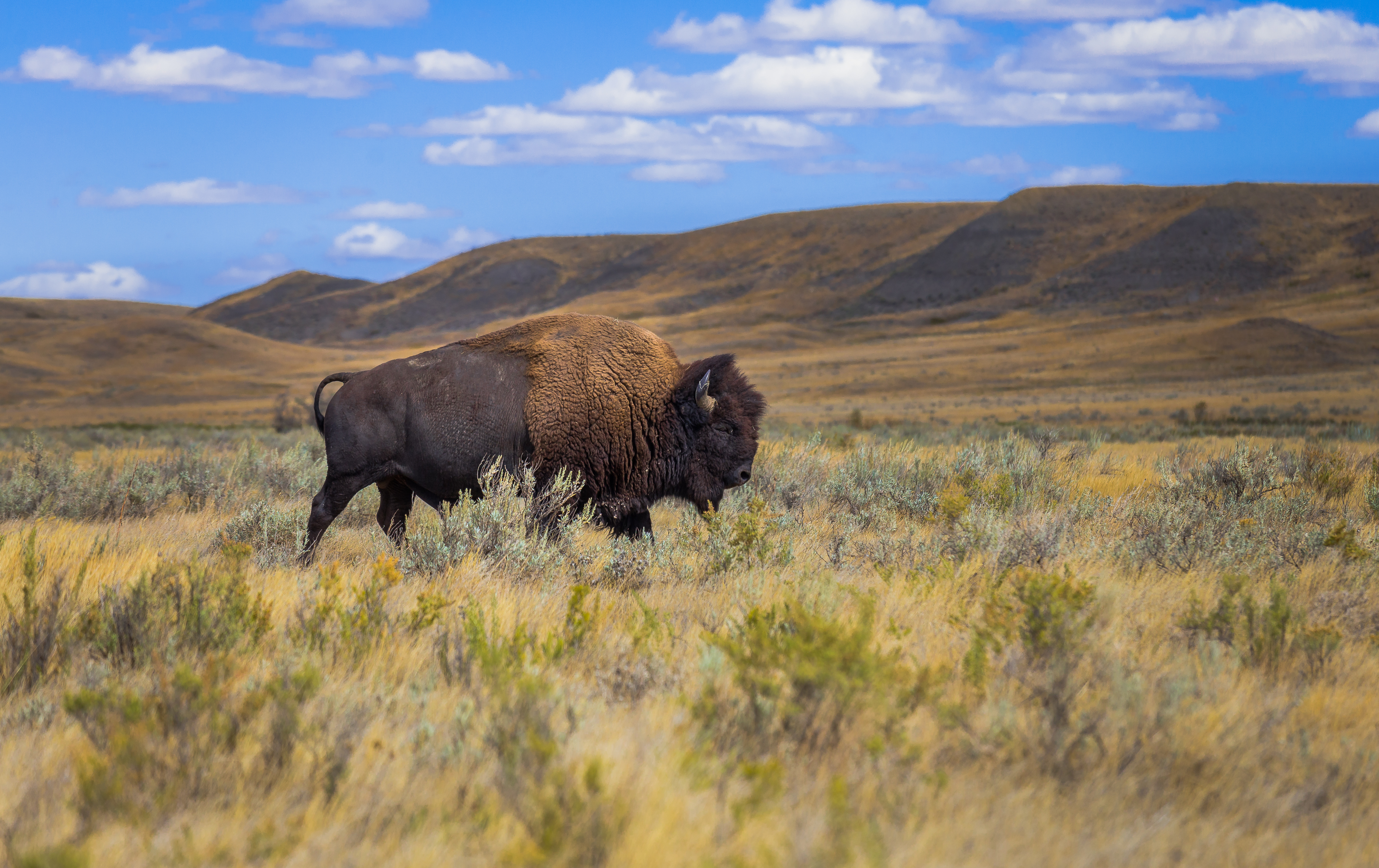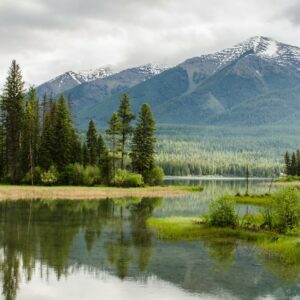The Plains Bison: No Buffalo
The males are called bulls, the calves are called red dogs, and some people call them all buffalo, but that’s where science and language collide. Despite often being used interchangeably, bison and buffalo are completely different animals! There is some debate about why this confusion is so common, but the only real species of buffalo are native to either Asia or Africa and have evolved accordingly. The plains bison, scientifically named Bison bison bison, weighs about 1600 pounds if male, while the females weigh about 1000 pounds. Despite these whopping measurements, however, the plains bison is actually the smallest bison species!
Where are they found in Canada?
As a result of various protection laws enacted, the plains bison population in Canada has increased by more than 35% since 2004. Currently, plains bison in Canada can be found in British Columbia, Alberta, Saskatchewan, and Manitoba. Of these bison, however, the only wild populations live in BC and Saskatchewan. Although they have made the plains of North America their home, plains bison are not native to the region either. The bison that live there today originated from Asia and began to migrate thousands of years ago through Siberia, undergoing multiple stages of evolution before becoming the modern plains bison.

© Richard Main
A Threatened Species
So what’s the issue? The plains bison is listed as a threatened species according to their most recent COSEWIC assessment. On the surface, the fact that their population has increased by such a large percentage seems like it would be great news. It is, and it certainly represents strides in the right direction, but prior to the expansion of the fur trade and European settlement, there were approximately 30 million bison across the continent.
This is in stark contrast to the current estimated North American population which is significantly smaller than 1 million over 95% of which is for commercial purposes. Having such a small fraction of their population in the wild brings with it another threat which may be forgotten about: a weakened gene pool. As a population decreases in size it loses members who would have been able to contribute to genetic diversity, which creates a stronger, healthier, and more viable population as it increases. In the event that the population were to become even smaller, their lack of genetic diversity would be a major problem for plains bison in the future.
So what can we do?
While they currently have a COSEWIC listing, plains bison are currently unlisted under SARA, a decision made in part due to the protections they already receive living within national parks & considerations for the economic health of the bison industry. It is important to become better acquainted with the nuance behind situations such as these to better protect the plains bison. To take a more direct approach, supporting charity and research organizations focusing on the well-being of plains bison is a great help with an immediate impact.



